


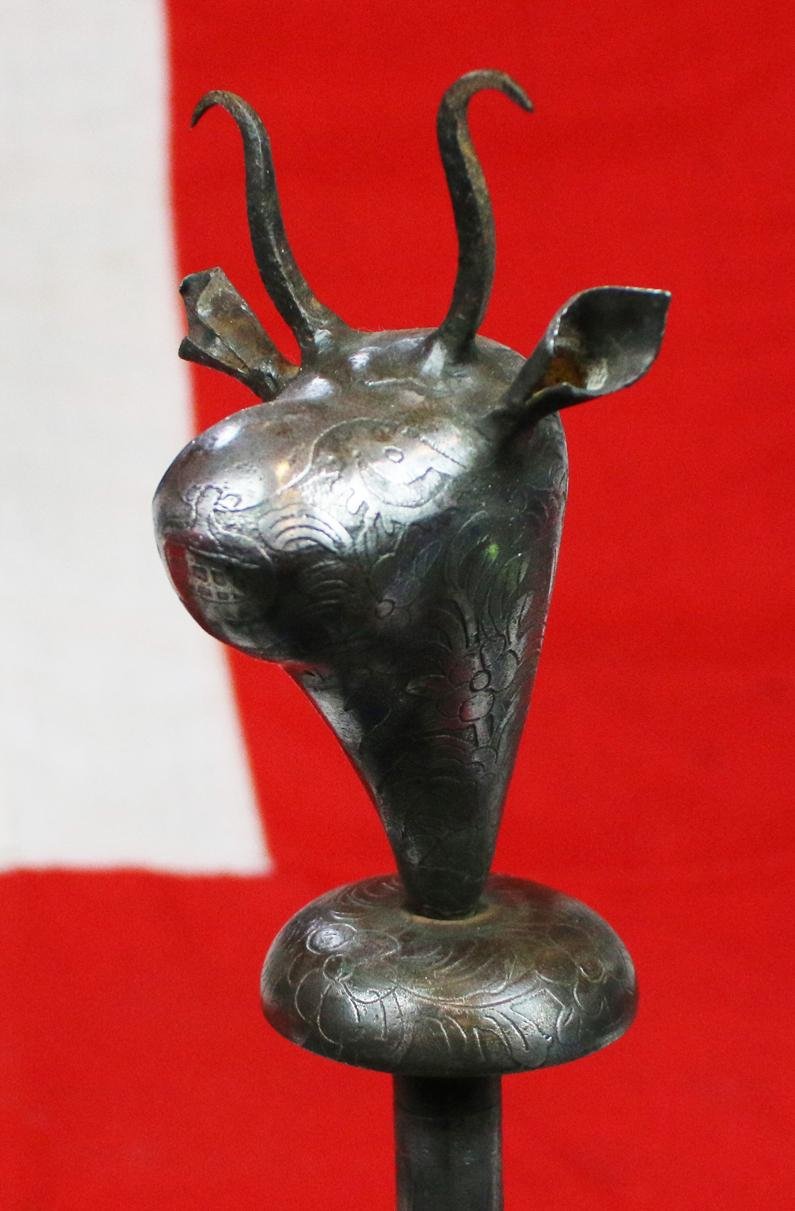
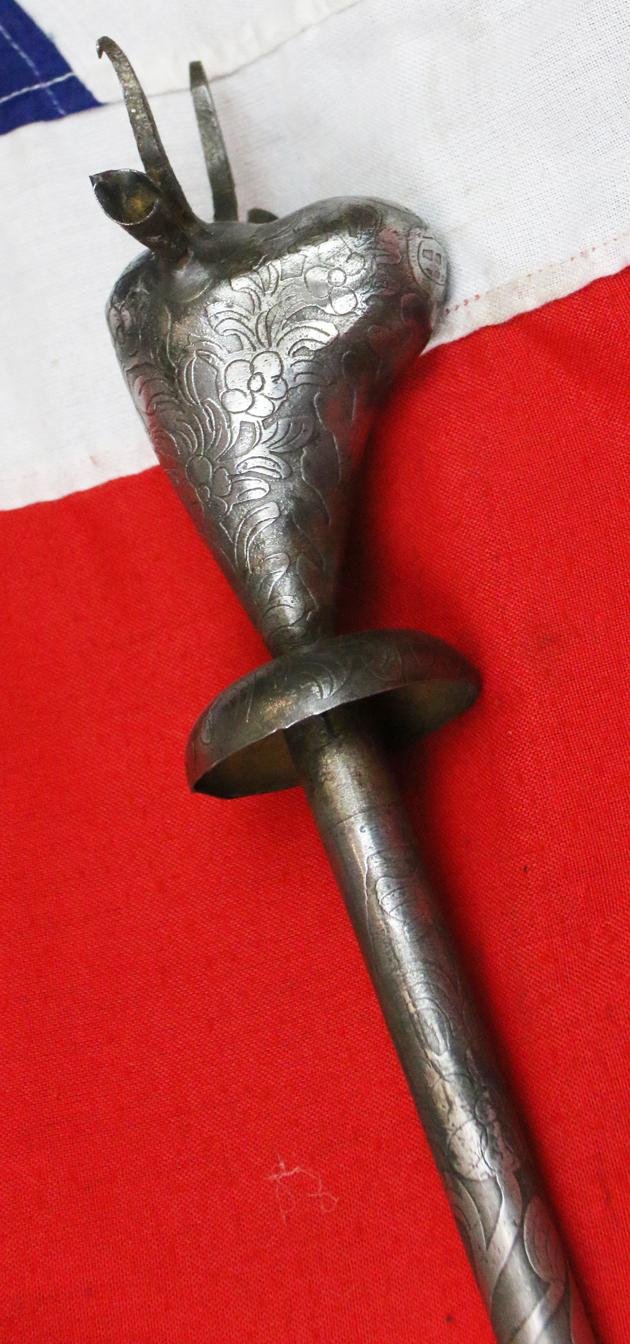

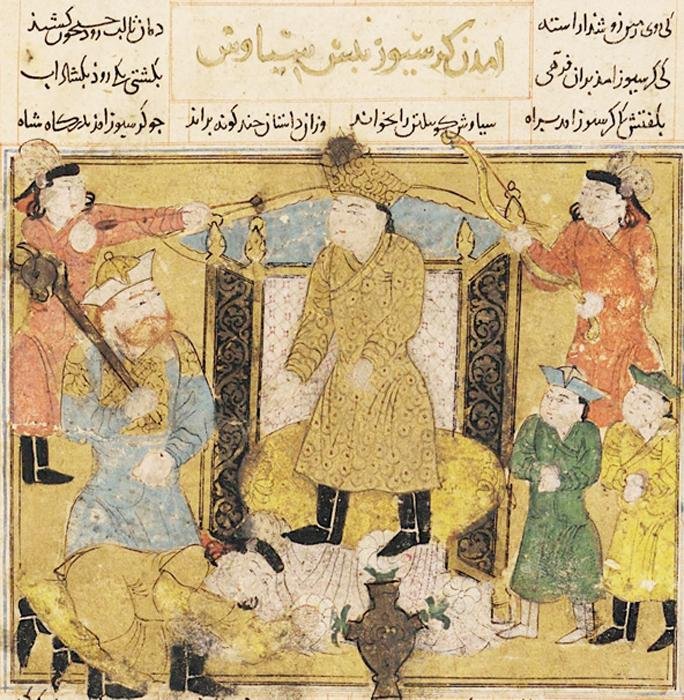
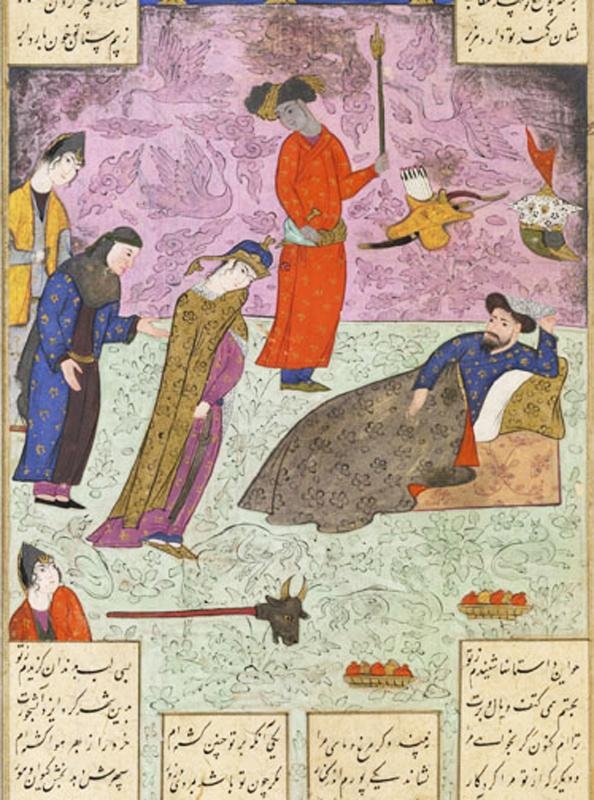
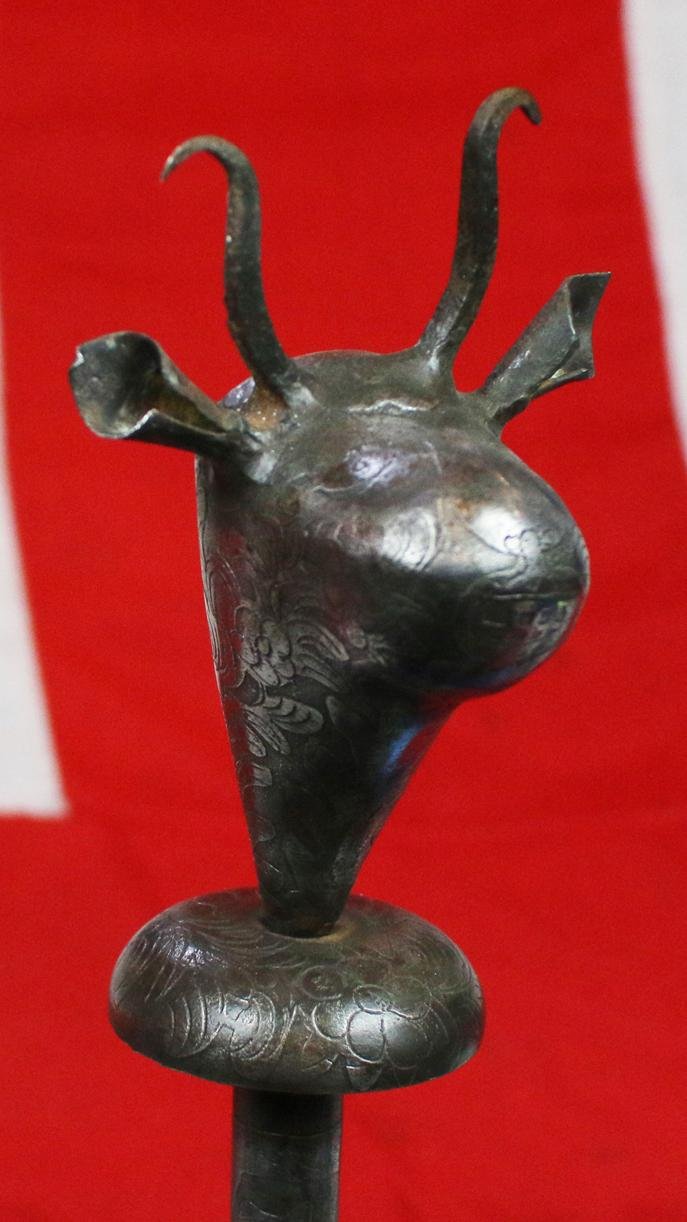
A Fine Antique Indo-Persian Ceromonial 'Mace of Rostam' the Bull's Head Mace
| Conflict | Before 19th Century | Nation | None |
| Item Type | Edged Weapons, Components & Accessories | Source Site | THE_LANES_ARMOURY |
| Product ID | 497633 | Currency | GBP |
Ships from: United Kingdom
A Persian all iron 'Mace of Rostam' the mighty Paladin of Persia. The mace's head is a full bull's head, after Rostam's fabulous Mace, with applied horns and ears, with iron haft with engraved decoration throughout the whole mace decoration and all three sides of the bull's head. Good overall condition for age.See Allan and Gilmour fig.26 for a closely related example, and p.189 and 315 for a discussion of these maces. Rostam, sometimes spelled Rustam, was the son of Zal and Rudaba, and the most celebrated legendary hero in Shahnameh and Persian mythology. In Shahnameh, Rostam and his predecessors are Marzbans of Sistan (present-day Iran and Afghanistan). Rostam is best known for his tragic fight with Esfandiar; the other legendary Persian hero, for his expedition to Mazandaran (not to be confused with the modern Mazandaran province); and for tragically fighting and killing his son, Sohrab, without knowing who his opponent was. Rostam was eventually killed by Shaghad, his half-brother.Rostam was always represented as the mightiest of Iranian paladins (holy warriors), and the atmosphere of the episodes in which he features is strongly reminiscent of the Parthian period. He was immortalized by the 10th-century Persian poet Ferdowsi in the Shahnameh, or Epic of Kings, which contains pre-Islamic Iranian folklore and history.He rode the legendary stallion Rakhsh and wore a special suit named Babr-e Bayan in battles. While out hunting Rostam awoke from his sleep to find Rakhsh had gone missing. He was distraught at losing his beloved horse and he tracked him as far as the city of Samangan. Here he greeted the King and asked for his help to find Rakhsh.While in Samangan, Rostam met the king's lovely daughter Tahmina. The Shahname describes her as elegant as a cypress tree. One night she came to his room:' My name is Tahmineh; longing has tornMy wretched life in two, though I was bornThe daughter of the king of Samangan,And am descended from a warrior clan.But like a legend I have heard the storyOf your heroic battles and your glory,Of how you have no fear, and face alonedragons and demons and dark unknownOf how you sneak into Turan at nightAnd prowl the borders to provoke a fight,Of how, when warriors see your mace, they quailAnd feel their lionhearts within them fail.I bit my lip to hear such talk, and knewI longed to see you, to catch sight of you,To glimpse your martial chest and mighty face-And now God brings you to this lowly place.If you desire me, I am yours, and noneShall see or hear of me from this day on.'But their time together was brief, because once Rakhsh was found, Rostam departed for his homeland. Nine months later Tahmina gave birth to a son Sohrab, who grew up to be a warrior like his father Rostam. Scene from the Shahnama: Garsivaz prostrating himself before Siyavush in the presence of Rustam. 14th century, 54cms

